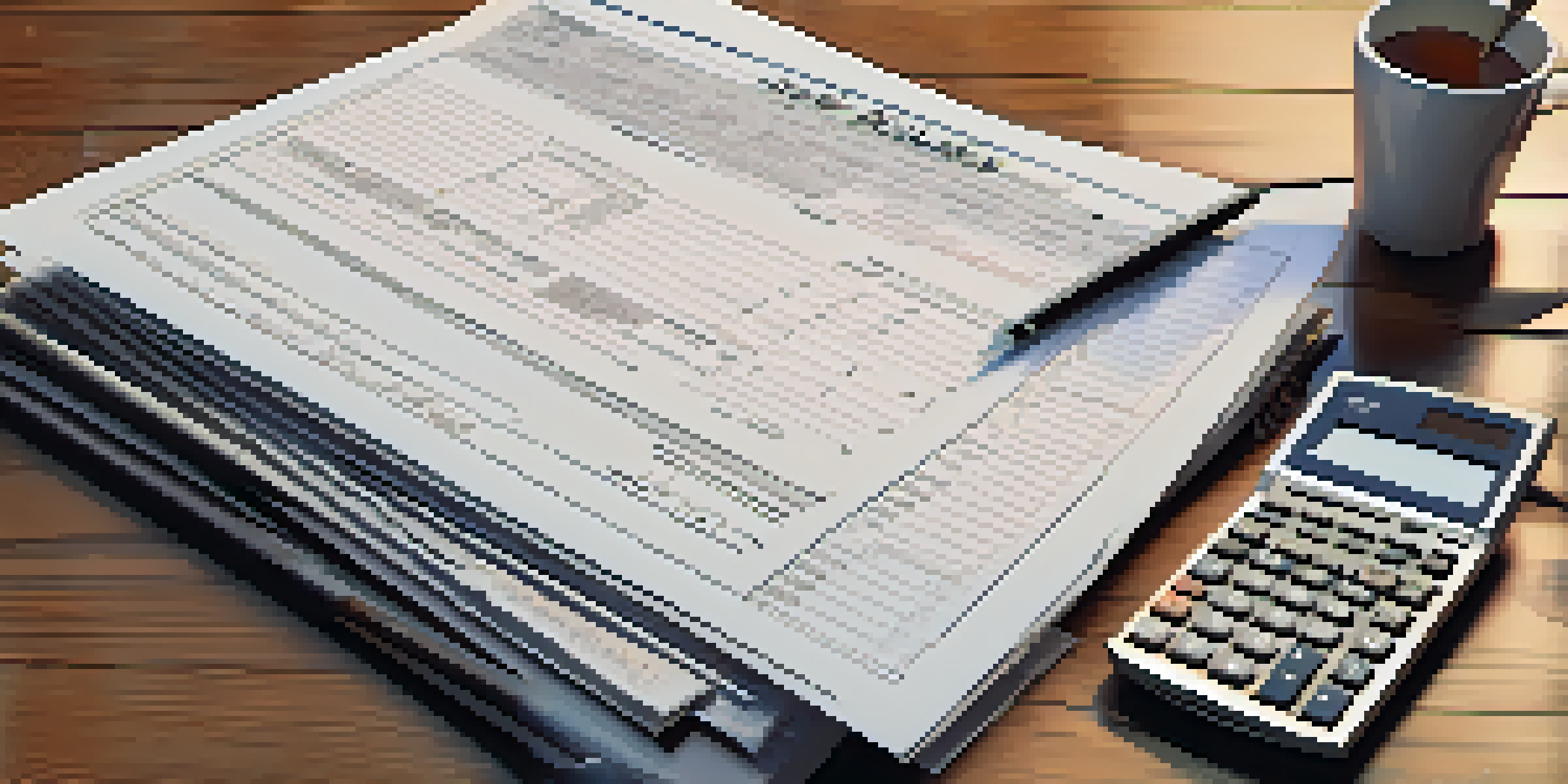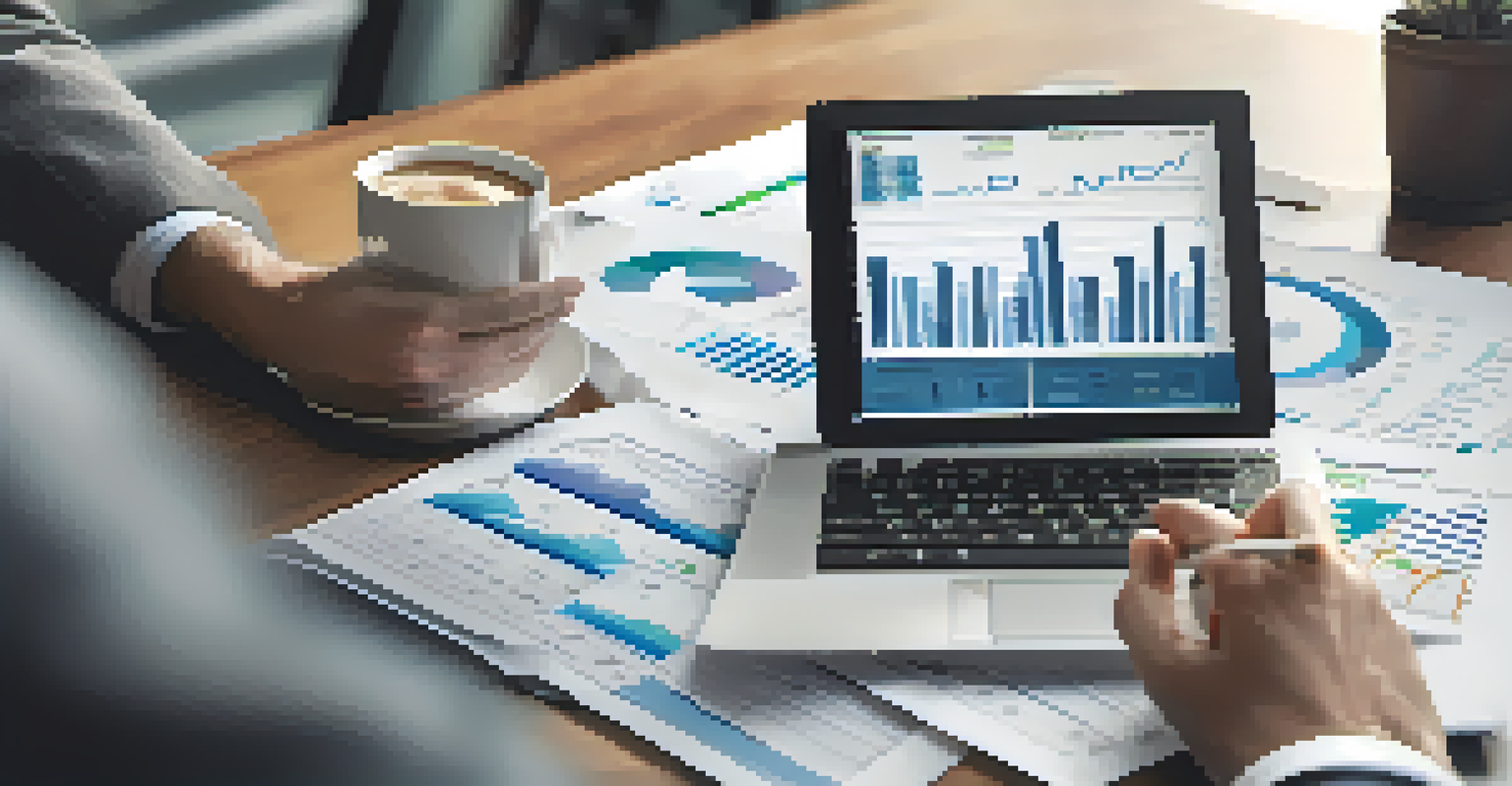Analyzing Balance Sheets: Key Factors for Investors

Understanding the Balance Sheet Basics for Investors
A balance sheet is a financial snapshot of a company at a given time, showcasing its assets, liabilities, and equity. Think of it as a detailed report card that tells you how well a company is doing financially. By understanding this document, investors gain insights into the company's financial health and stability.
In investing, what is comfortable is rarely profitable.
The balance sheet follows the fundamental equation: Assets = Liabilities + Equity. This means that what a company owns (assets) is financed either by what it owes (liabilities) or the owner's investment (equity). Grasping this relationship is crucial for making informed investment choices.
In essence, the balance sheet helps investors assess whether a company is over-leveraged or has enough assets to cover its debts. This understanding is vital for evaluating the risk level associated with investing in that company.
The Importance of Assets in a Balance Sheet Analysis
Assets are the resources that a company owns, and they are categorized into current and non-current. Current assets, like cash and inventory, are expected to be converted into cash within a year, while non-current assets, such as property and equipment, are long-term investments. Evaluating these assets helps investors understand a company's liquidity and operational efficiency.

For instance, a company with high current assets relative to its current liabilities is generally seen as financially healthy. This indicates that it can cover short-term obligations, which is a reassuring sign for investors. Conversely, a lack of current assets may raise red flags about the company's ability to sustain its operations.
Balance Sheet Reveals Financial Health
A balance sheet provides a snapshot of a company's assets, liabilities, and equity, essential for assessing its financial stability.
Moreover, assessing non-current assets provides insight into a company's long-term growth potential. A strong portfolio of non-current assets may indicate that a company is investing in future opportunities, which can be an appealing factor for investors.
Evaluating Liabilities and Their Impact on Financial Health
Liabilities represent what a company owes and are divided into current and long-term liabilities. Current liabilities must be settled within a year, while long-term liabilities are due beyond that timeframe. Understanding these liabilities is crucial for investors, as they can impact a company's cash flow and overall financial stability.
The stock market is filled with individuals who know the price of everything, but the value of nothing.
A company with high liabilities relative to its assets might be at risk of financial distress. For example, if a company's liabilities exceed its assets, it could struggle to meet its obligations, raising concerns for potential investors. On the flip side, manageable levels of debt can signal that a company is effectively leveraging its resources for growth.
By analyzing the balance between liabilities and assets, investors can gauge the risk associated with a company. A favorable debt-to-equity ratio often indicates that a company is using debt wisely, which can be a positive sign for potential investors.
The Role of Equity in Understanding Company Value
Equity represents the ownership interest in the company and is calculated as total assets minus total liabilities. This figure indicates how much value shareholders would have if the company were to liquidate its assets and pay off its debts. For investors, equity is a crucial measure of a company's worth and financial viability.
A growing equity figure over time often suggests that a company is reinvesting profits back into the business, which can lead to future growth. This trend can be particularly appealing to investors looking for companies with strong potential for appreciation in value. Conversely, declining equity might indicate issues that could concern investors.
Assets Indicate Liquidity and Growth
Evaluating a company's current and non-current assets helps investors understand its operational efficiency and long-term growth potential.
In summary, equity not only reflects financial health but also serves as a benchmark for assessing the company’s performance. Investors should keep an eye on this metric when making investment decisions, as it directly impacts share price and overall market perception.
Analyzing the Current Ratio for Financial Stability
The current ratio, calculated as current assets divided by current liabilities, measures a company's ability to pay short-term obligations. A current ratio of 1 or higher is generally considered healthy, indicating that a company has enough assets to cover its liabilities. Investors often look at this ratio to assess financial stability.
For example, a current ratio of 2 means that for every dollar of liability, the company has two dollars in assets, which is a reassuring sign for investors. However, an excessively high current ratio might suggest that a company is not effectively utilizing its assets, which could be a concern.
Overall, the current ratio is a simple yet effective tool for investors to gauge a company's short-term financial health and operational efficiency. It serves as a quick reference point for understanding how well a company can manage its immediate financial commitments.
Debt-to-Equity Ratio: Understanding Financial Leverage
The debt-to-equity ratio measures the relative proportion of shareholder's equity and debt used to finance a company's assets. A lower ratio generally indicates a more financially stable company, while a higher ratio suggests a company may be taking on excessive debt. Investors often use this ratio to evaluate financial risk.
For instance, a debt-to-equity ratio of 0.5 means that the company uses 50 cents of debt for every dollar of equity. This can signal that the company is using leverage wisely to fuel growth while maintaining a solid equity base. Conversely, a ratio above 1 might indicate high leverage, which could be a red flag for investors.
Debt-Equity Ratio Signals Risk Level
The debt-to-equity ratio helps investors gauge financial risk by indicating how much debt a company uses compared to its equity.
Understanding this ratio helps investors make informed decisions about the level of risk they are willing to take when investing in a company. It serves as a critical indicator of how a company finances its growth and how it balances risk and return.
Interpreting Trends in Balance Sheet Metrics Over Time
Analyzing balance sheet metrics over time provides crucial insights into a company's financial trajectory. Investors should look for trends in key metrics like total assets, liabilities, and equity to identify patterns that may signal growth or decline. This longitudinal analysis can help investors predict future financial performance.
For example, if a company's assets are consistently increasing while liabilities remain stable, it suggests robust growth and effective management. Conversely, if liabilities are creeping up faster than assets, it may hint at potential trouble ahead. Understanding these trends can give investors a clearer picture of a company's financial future.

In essence, looking beyond a single balance sheet snapshot and considering trends over time allows investors to make more informed decisions. It equips them to identify whether a company is on a positive trajectory or facing potential challenges.